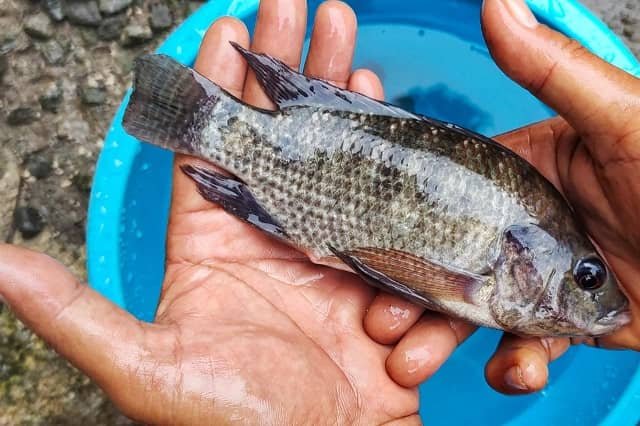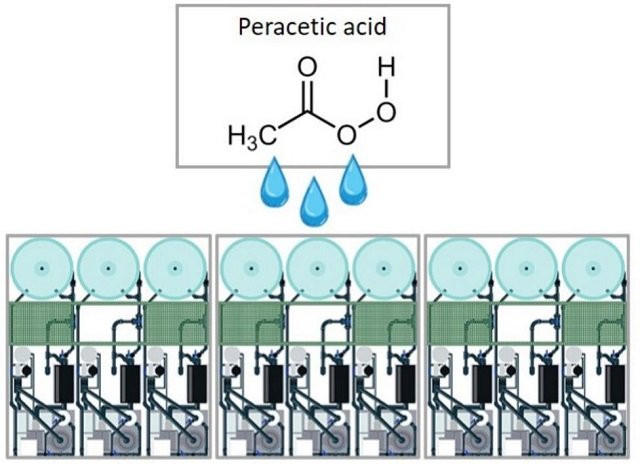
Tilapia is one of the most widely farmed fish species worldwide, with the common practice being their cultivation in ponds and cages. However, in some European countries, Israel, and the United States, they are raised in recirculation aquaculture systems (RAS).
In aquaculture recirculation systems, pathogens are often effectively controlled by water disinfection using UV radiation or ozone.
Due to its potent oxidizing properties, ozone is extensively employed as a chemical disinfectant to kill pathogens, including bacteria and viruses.
However, recent research by scientists from the Leibniz-Institute of Freshwater Ecology and Inland Fisheries, Christian-Albrechts-University Kiel, and Fraunhofer Research Institution for Individualized and Cell-Based Medical Engineering, Aquaculture, and Aquatic Resources has shed light on a byproduct of the ozonation process known as ozone-produced oxidants (OPO) and their impact on fish health.
The scientists studied the impact of three different sublethal concentrations of OPO (0.05, 0.10, and 0.15 mg/L equivalent of chlorine) on the gills of Nile tilapia (Oreochromis niloticus) juveniles reared in brackish water. Their aim was to determine a non-hazardous concentration of OPO for the ozonation process in a recirculating aquaculture system.
Impact of OPO on Nile Tilapia
Ozone-produced oxidants (OPO) are more toxic than ozone in marine and brackish waters. These OPO can accumulate in the system and cause severe impacts on the cultured species.
“Although toxicity differs between ozonized freshwater and seawater due to differences in the reactivity of the respective oxidants, research on the toxic effects of OPO in marine and brackish water is limited,” the study reports.
The study focused on evaluating the effects of exposure to different concentrations of OPO on Nile tilapia fry in brackish water. Chlorine equivalent levels were set at 0, 0.05, 0.1, and 0.15 mg/L, and the impact was monitored after 2, 9, and 21 days of exposure.
Stay Always Informed
Join our communities to instantly receive the most important news, reports, and analysis from the aquaculture industry.
Evaluation parameters included gill histopathology and mitochondrial DNA lesions.
Study Results
The results revealed significant impacts on fish health as OPO concentration increased. Researchers reported gill damage in all specimens.
“The gills showed various damage. Interlamellar edema was characterized by cell-free sections in the filamentous epithelium. In less severe cases, cell-free sections were found only near the lamellae, but it could also affect the entire filamentous epithelium,” the researchers reported.
Gill damage was observed as early as 2 days of exposure, including an increased number of cases of gill lamellae lifting, lamellae fusion, and edema, especially at a concentration of 0.15 mg/L.
After 21 days of exposure, an increase in gill lamellae fusion and edema was recorded, again more pronounced at 0.15 mg/L. Furthermore, hyperplasia notably increased at 0.05 mg/L after 9 days of exposure.
Most significantly, DNA fragmentation was observed, increasing to 3.92 lesions per 10 kb at a concentration of 0.15 mg/L, compared to 2.62 lesions per 10 kb in the control group.
Implications for Tilapia Aquaculture
The findings of this study suggest that OPO levels must be maintained below 0.05 mg/L chlorine equivalent to prevent adverse effects on fish welfare, especially in recirculating aquaculture systems. This poses significant challenges for the safe use of ozone in water disinfection in these systems. The concern lies in ensuring that disinfection practices do not compromise fish welfare, a critical aspect of sustainable aquaculture.
Conclusions
This study underscores the importance of understanding the side effects of disinfection technologies, such as ozonation, in aquaculture. While ozone is effective in removing pathogens from the water, its byproducts, OPO, can have a negative impact on fish health.
“OPO concentrations < 0.05 mg/L are considered safe for the growth of tilapia in brackish waters. Additionally, histological alterations, gill tissue damage, and DNA fragmentation were detected at 0.05 mg/L,” the researchers conclude.
The research highlights the need to keep OPO levels low to ensure the sustainability and welfare of fish populations in recirculating aquaculture systems.
The study was funded by Deutsche Bundesstiftung Umwelt (DBU) and the Leibniz Institute of Freshwater Ecology and Inland Fisheries.
Contact
Sven Wuertz
Department Fish Biology, Fisheries and Aquaculture
Leibniz-Institute of Freshwater Ecology and Inland Fisheries
Müggelseedamm 310, 12587 Berlin, Germany
Email:sven.wuertz@igb-berlin.de
Reference (open access)
Sven Wuertz, Carsten Schulz, Simon Klatt, Wibke Kleiner, Jan P. Schroeder. 2023. Adverse effects of ozonation on the animal welfare of tilapia Oreochromis niloticus in recirculation aquaculture, Aquaculture Reports, Volume 32, 2023, 101737, ISSN 2352-5134, https://doi.org/10.1016/j.aqrep.2023.101737.
Editor at the digital magazine AquaHoy. He holds a degree in Aquaculture Biology from the National University of Santa (UNS) and a Master’s degree in Science and Innovation Management from the Polytechnic University of Valencia, with postgraduate diplomas in Business Innovation and Innovation Management. He possesses extensive experience in the aquaculture and fisheries sector, having led the Fisheries Innovation Unit of the National Program for Innovation in Fisheries and Aquaculture (PNIPA). He has served as a senior consultant in technology watch, an innovation project formulator and advisor, and a lecturer at UNS. He is a member of the Peruvian College of Biologists and was recognized by the World Aquaculture Society (WAS) in 2016 for his contribution to aquaculture.




